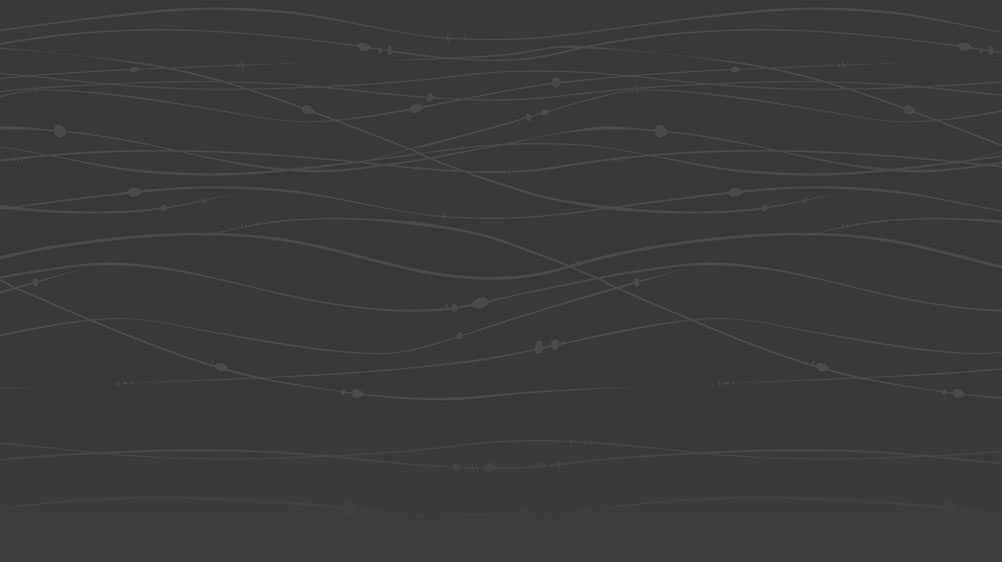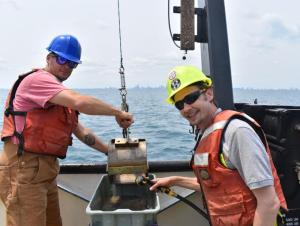

written by Lyuba Burlakova, Sasha Karatayev, Allison Hrycik, and Susan Daniel
On March 28, 2022, the Environmental Protection Agency announced awarding $6.7 million to Cornell University to monitor the lower food webs in Great Lakes. Through a collaboration with Cornell University, the Great Lakes Center (GLC) was awarded over $3 million to continue surveying benthic invertebrates for the next 5 years. Lyuba Burlakova, Sasha Karatayev, and Allison Hrycik are the principal investigators of this part of the grant.
This is the third consecutive time the GLC has received this award, allowing us to collect benthic data since 2012. It takes a lot of effort and dedication from our brilliant benthic team, including research scientist, lead taxonomic expert, and lab manager Susan Daniel, and our research technicians and taxonomists Erik Hartnett, Brianne Tulumello, and Kit Hastings, together with principal investigators and graduate and undergraduate students, to sort and identify over 400 samples every year and submit the data in a timely fashion.
Within this project, we will combine the annual sampling at 57 long-term monitoring stations on all the lakes with one lake-wide survey of each lake per year. Sampling of all the Great Lakes aboard the EPA research vessel Lake Guardian is a remarkable experience.
A key advantage of this grant is the broad research opportunities it presents, and our ability to modify and improve the monitoring. Thus, we added video methods to our surveys, first to understand dreissenid distribution in lakes, then to provide rapid assessment of dreissenid populations in Great Lakes in almost real-time, and finally to improve our understanding of benthic landscapes.
Large-scale benthic surveys within the Cooperative Science and Monitoring Initiative (CSMI) allowed us not only to access the current status of each lake but were an opportunity to follow long-term changes in benthic communities. Therefore, we started to collect, analyze, and make publicly available all historical benthic data from Great Lakes. This process has now been completed for Lakes Michigan (Mehler et al., 2021), Ontario (Burlakova et al., 2022) and Erie (Karatayev et al., in review).
Major findings from these historical comparisons showed us that the benthic community underwent dramatic changes in the last six decades prompted by introduction of dreissenids, zebra and then quagga mussels, that increased the densities and biomass of benthic invertebrates over ten-fold. Moreover, the enormous changes in the benthic communities induced drastic changes in all other aquatic communities and in the Great Lakes environment. According to recent estimates, the quagga mussel is now the primary regulator of phosphorus cycling in the lower four Great Lakes: the tissues and shells of quagga mussels now contain nearly as much phosphorus as the entire water column, representing a dramatic example of large-scale reorganization of Great Lakes geochemical cycles by a single invader. Therefore, while monitoring of external phosphorus loads remains important in the Great Lakes, the monitoring of benthic, especially dreissenid populations, is now more important than ever.
Importantly, this funding provides Buffalo State students with job and research opportunities. To date, two students received their master’s degrees funded by these grants (Susan Daniel and Sonya Bayba); over 12 graduate students from GLES program went through the internship program at the GLC or found a job in the lab; over 30 undergraduate students have had jobs and became familiar with Great Lakes benthic communities and the monitoring program, and several students went aboard the R/V Lake Guardian to participate in sample collection, a unique and unforgettable experience. Preparation of a new cadre of scientists and citizens understanding past and current environmental problems is a very important part of our project. We invite all interested students to come to our lab to check out research and job opportunities we provide!
Image Caption: Former GLES graduate student Josh Allen, currently R/V Lake Guardian marine technician, and GLC research technician Erik Hartnett washing a benthic sample on Lake Michigan in July 2021.
Some content on this page is saved in PDF format. To view these files, download Adobe Acrobat Reader free. If you are having trouble reading a document, request an accessible copy of the PDF or Word Document.
